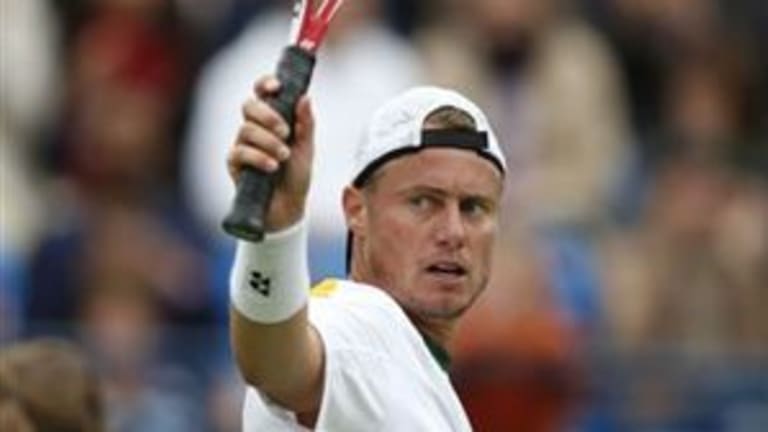LONDON—“What’s so special about Baron’s Court then?”
That’s what the man with the gray ponytail in the ticket booth wanted to know. It was a fair question: I was at the Southwark tube station here, and I'd just told him that I needed to get to the Baron’s Court stop and back, each day for the next four days, and that I wouldn't need to go anywhere else in the city. This must have sounded like a highly irregular request from a tourist in London, because he eyed me as if I were from another planet, rather than just the planet known as America.
“I’m going to a tennis tournament,” I finally explained. Back in the States, this answer wouldn’t have helped me sound any less suspicious, but it seemed to satisfy him.
“Well, welcome to summer,” he answered with a gloomy smile. It wouldn't be the last time I heard those dour words from a local on this mostly cloudy, chilly, misty, sub-60 June afternoon.
But Baron’s Court, and a tennis tournament, it was—and will be for the rest of this week. For those tennis junkies who happen to be equipped with an elephant’s memory, the name might ring a bell. This is the tube stop just down the street from the Queen’s Club, a longtime nerve center of British tennis, and the one-time capital of the international amateur game. In the late 1960s and early 70s, it was here that the sport’s governing body, the ILTF (now the ITF), tried to hold off the forces of American professionalism represented by Texas oilman Lamar Hunt, who was trying to get his WCT Tour off the ground. In the view of the game’s traditionalists, Queen's and the All England Club were the temple, and Hunt and his tour were the money-changers who wanted to desecrate it—the fear at the time was that Hunt was going to take over the game entirely. The battle between the two sides was referred to by some British writers as “Baron’s Court vs. Dallas." The traditional, in other words, versus the tawdry.
Dallas and the money-changers would eventually tear down the temple walls, of course; four decades later, Queen's has been reduced to playing its own small part in the professional circus by staging a 250-level Wimbledon tune-up event every summer. The tournament’s mix of classic and commercial is obvious from the moment you get off the tube. You’re immediately hustled, with hundreds of other spectators, through the station and down the main artery of an otherwise quaint London neighborhood. Brick homes, small shops, and their many tiny chimneys are packed tightly along a narrow street. But it’s not so quaint that it can’t be swamped with advertising if need be. The trademark blue logo of Aegon, the life insurance company that sponsors all of the Wimbledon warm-ups, is visible throughout the area. Even the young usherettes who stand on the sidewalk and point the way to the club wear boat shoes colored Aegon blue.
Queen's at first glance looks like a Wimbledon for urbanites. There’s a lot less room—the club is hemmed in by apartment buildings on all sides—and a little more style. Or what Americans would call preppy style: Suits and blazers, bright ties and brighter skirts, pink socks, skinny-making jeans, and expensive sunglasses propped up on graying foreheads. Also, one conspicuous green dress, belonging to Pippa Middleton. She walked in, to the craning of many necks, during Andy Murray’s first match. A style trooper all the way, she braved the cold wind without covering up.
Inside the dark brick clubhouse at Queen's, tradition still rules. Its labyrinthine hallways and staircases have something of a Downton Abbey feel. The club’s blazer-wearing members play the role of the Crawley family, while the rest of us jeans-wearers spend the week slaving away in the servant’s quarters that surround them. Member and worker: Never, hopefully, the twain shall meet. Each walks his own hallways, drinks at his own bars, enters and exits his own bathrooms, and grazes at his own tables. Members dine at the club’s elegant central restaurant, just above the stadium court. The press stuffs its collective face in the loud and crowded Buttery in the back while sitting five to a table. I half expect a black-suited Carson to stride in with a huff of disgust and call everyone to order.
In the amateur days, the players were on the worker’s side of this divide. Now that they’re multimillionaires, it’s hard to say where they stand. They form a sort of second, equally sequestered elite. But the the club’s business doesn’t stop for them. Queen's, which was founded in 1886 (it was named for Victoria, not Elizabeth II), is home to every possible racquet sport, the more ancient and esoteric the better, and they continue to be played even as the pros take over what are still known as the lawn tennis courts.
